Wherever you go along the shores of Skadar Lake, you will see traditional wooden boats called ‘čun’.
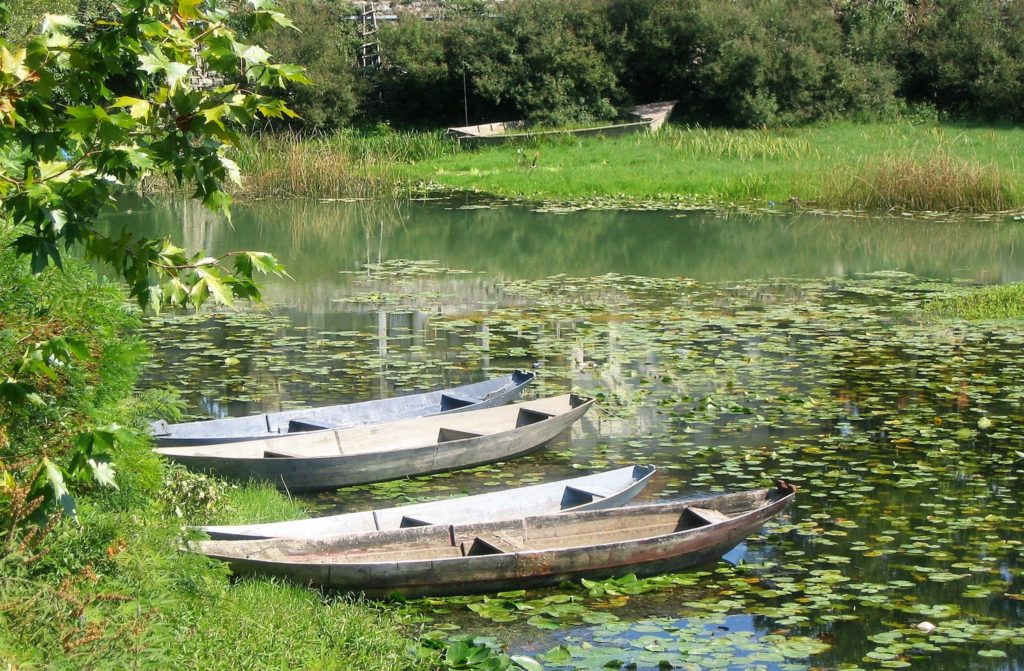 What is so specific about the photogenic ‘čun’ that is protected by law as national cultural heritage? Above all, the ‘čun’ is one of the most authentic symbols of Montenegro. It is an integral part of Montenegrin culture and history and it has always been a synonym of life for the inhabitants of the villages around Skadar Lake.
What is so specific about the photogenic ‘čun’ that is protected by law as national cultural heritage? Above all, the ‘čun’ is one of the most authentic symbols of Montenegro. It is an integral part of Montenegrin culture and history and it has always been a synonym of life for the inhabitants of the villages around Skadar Lake.
This slim and shallow-bottomed boat has the advantage that it can float through shallow waters and narrow fishing trails, it can easily find its way through reeds and water lilies and it is very stable under unfavourable weather conditions.
This is the reason that the ‘čun’, after many centuries, is still the main means of transportation on Skadar Lake and in the surrounding villages, where you can still feel the spirit of the past.
But let me tell you something about the history of the ‘čun’.
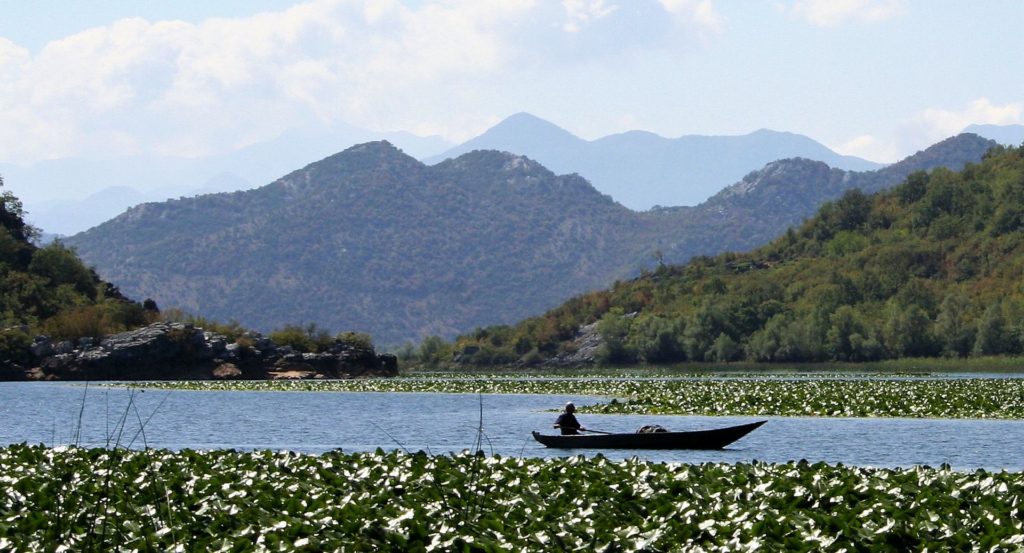 Some historical data state that the ‘čun’ has been present in these areas since Roman times. In the 19th century, a French travel writer wrote that the Montenegrin warriors, with their fast and easily movable boats, brought heavy losses to the massive Ottoman ships during a battle on Skadar Lake.
Some historical data state that the ‘čun’ has been present in these areas since Roman times. In the 19th century, a French travel writer wrote that the Montenegrin warriors, with their fast and easily movable boats, brought heavy losses to the massive Ottoman ships during a battle on Skadar Lake.
Anyway, ethnologists state that these boats have been adapted, through century-long experience, to the unpredictable weather conditions on the Lake.
By the way, did you know that Skadar Lake, now the biggest lake of the Balkans, has not always been like that? The Roman emperor and historical writer Titius Livius called it a swamp!
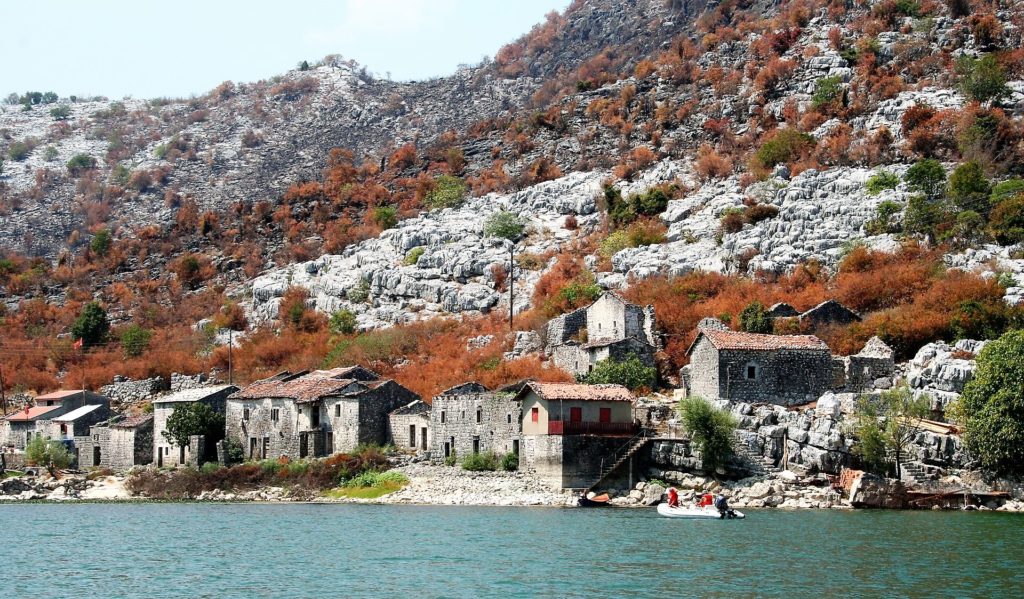 While legend says that the Lake was created in one night, when a young bride, happy to welcome her husband who came home from the war, forgot to turn off the water tap, the real story about the creation of the Lake is even more strange.
While legend says that the Lake was created in one night, when a young bride, happy to welcome her husband who came home from the war, forgot to turn off the water tap, the real story about the creation of the Lake is even more strange.
Until 1858, the Lake was only a big ‘bara’ (in translation: pond or pool) that was called Veliko Blato (Big Mud) by the locals. In that year, after a heavy thunderstorm, the Drim river, coming from the Albanian mountains, deposited enormous quantities of sand and mud on the mouth of the Bojana river, so that the riverbed changed its course and the ‘bara’ was transformed into today’s big lake.
Until fifty years ago, the villagers around Skadar Lake lived as their ancestors: without electricity, without modern technology, without cars. Their main source of income was fishery, and the ‘čun’ was the most valuable part of their property. Big ‘čuns’ were often lent to neighbours or people from other villages for weddings and funerals. Today, this tradition has disappeared.
Abandoned stone houses on the lake shores, overgrown with bushes and shrubbery, and half-sunken boats whose upper part protrudes from the water, witness that times have past when fishing was the main occupation of the region’s inhabitants. In present times, fishery is permanently declining.
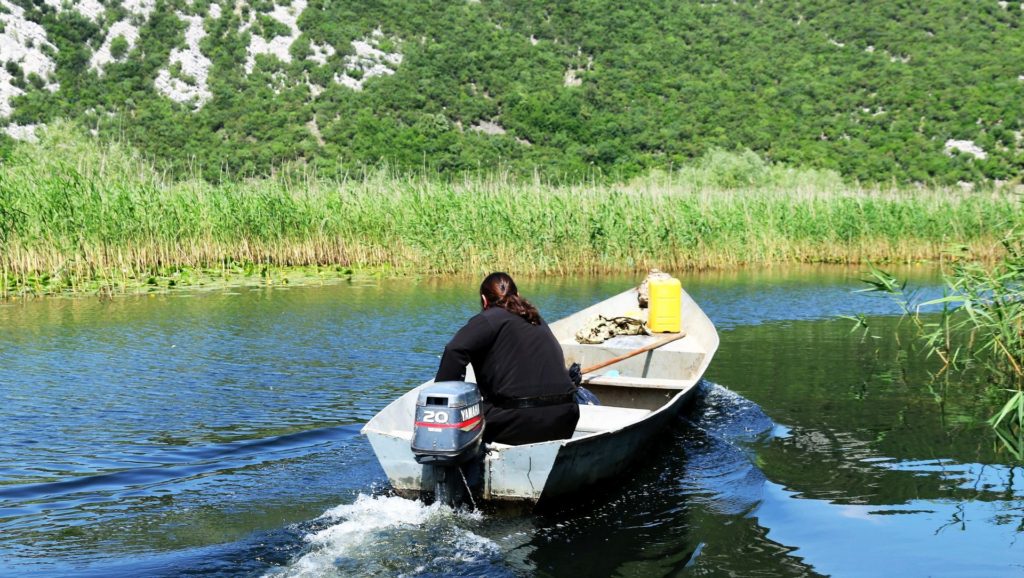 But apart from fishing, ‘čuns’ are also used as means of transportation for other purposes.
But apart from fishing, ‘čuns’ are also used as means of transportation for other purposes.
Around fifty islands, called ‘gorice’ are scattered all over the territory of Skadar Lake. Maybe they are exactly the most picturesque part and the real beauty of the Lake. There are old monasteries, churches and fortresses on twenty of them – these buildings were all constructed with the support of ‘čuns’ as only means of transportation. Nowadays, the monks and priests who live their lonely lives on these islands, still use these traditional boats for procuring and transporting their basic needs.
And what about the “natural” islets? They can also be useful: the villagers use their ‘čun’ to bring their cattle – in particular goats – to these islands in spring, as they can quietly let them stay there on their own. There is food and water enough!
If you are lucky, you can also spot old women paddling a ‘čun’. They help their husbands with fishing, but they also use these boats for gathering firewood, putting fishing nets into the water… Take a look at my pictures!
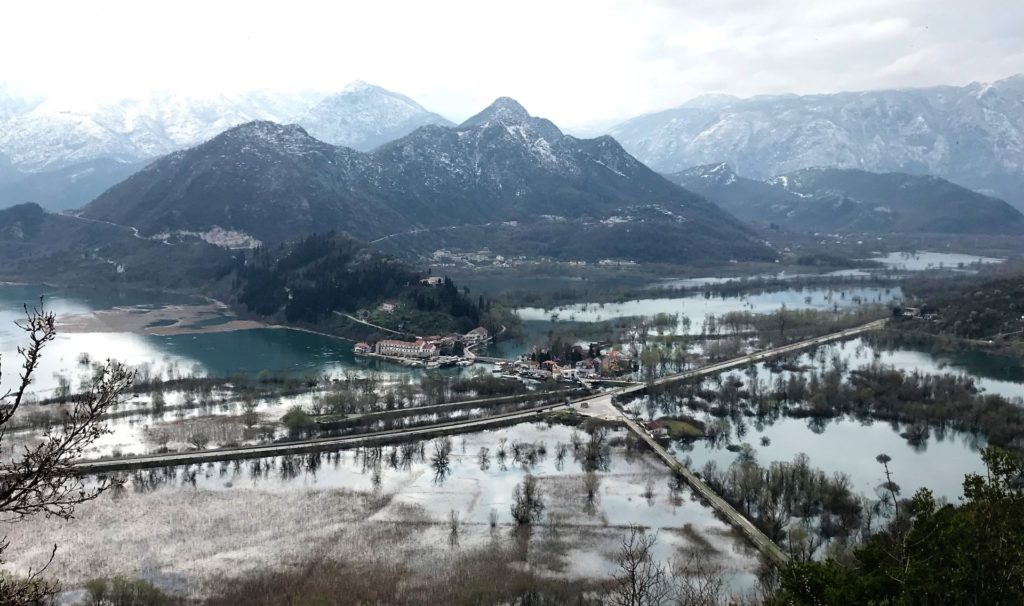 Just imagine that Skadar Lake changes its form and size from 370 square kilometers in summer to 530 square kilometers in winter. The green grass and forests alongside the shores of the lake are mostly covered by water in winter and spring, while the area is transformed into fertile land for the production of vegetables and cattle breeding during the summer months.
Just imagine that Skadar Lake changes its form and size from 370 square kilometers in summer to 530 square kilometers in winter. The green grass and forests alongside the shores of the lake are mostly covered by water in winter and spring, while the area is transformed into fertile land for the production of vegetables and cattle breeding during the summer months.
The average depth of the lake is only 5 m, but in summer, many areas can be explored only with a ‘čun’, as the Lake is too shallow for other boats. And let’s not forget the autumn and winter floods, which are quite frequent around Skadar Lake. On such occasions, the only possibility for the inhabitants of some villages around the Lake to reach the mainland is using their ‘čun’.
The manufacturing of wooden ‘čun’ boats is a very special craftmanship. Nowadays, there is only one family from Žabljak Crnojevića that cherishes this traditional handwork. The Brnović family has been manufacturing these boats by hand for five generations and they are thus protecting this ancient craft from slipping into oblivion.
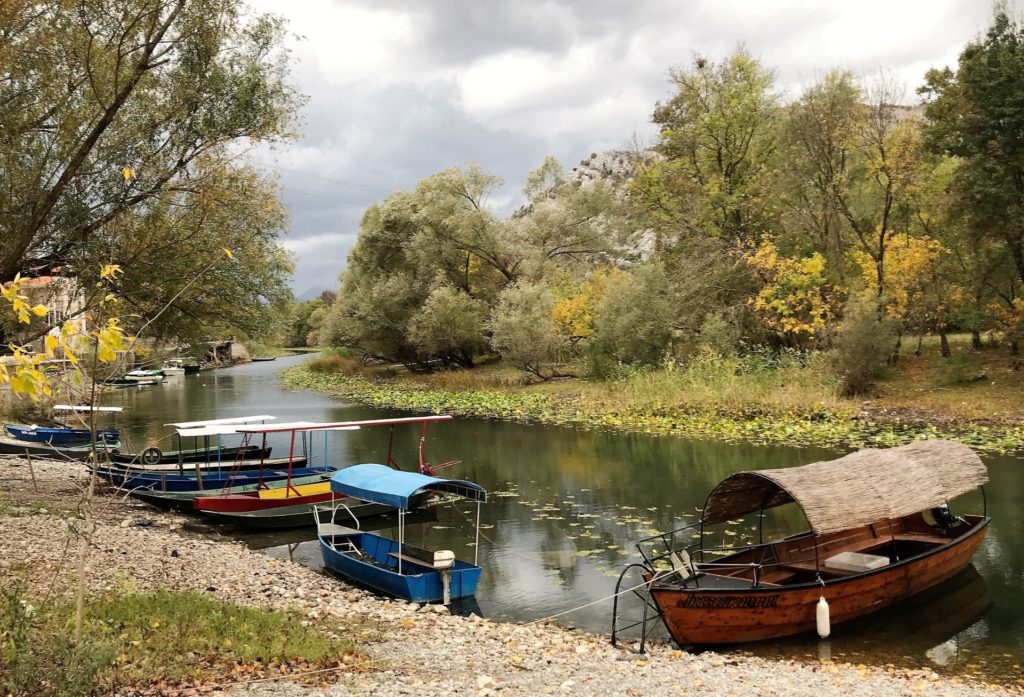 Each ‘čun’ that is made by the Brnović family is unique. It is most often made of white pinewood and it is painted traditionally in dark nuances of green, which perfectly fits into the environment of the Lake. The manufacturing of a simple ‘čun’ takes a few days. More time is needed for special orders, e.g. tourist boats.
Each ‘čun’ that is made by the Brnović family is unique. It is most often made of white pinewood and it is painted traditionally in dark nuances of green, which perfectly fits into the environment of the Lake. The manufacturing of a simple ‘čun’ takes a few days. More time is needed for special orders, e.g. tourist boats.
No doubt, the ‘čun’ should be promoted as a tourist brand. I am sure that there is no tourist who returns home without a bunch of photos depicting these picturesque wooden boats on Skadar Lake. You can see them everywhere around the Lake: in Rijeka Crnojevića, Vranjina, Virpazar, Žabljak Crnojevića, Karuč, Dodoši, Murići, …
Of course, along with tourism development, also other types of boats were put into service: plastic and metal boats, speedboats (what a pity!) and cruisers. Fortunately, there are still tourist agencies that prefer traditional wooden boats, i.e. Boat Milica. Some agencies want to be recognizable: they use viking ships, galleys or gondolas for the transportation of tourists. If you ask me: I prefer the original form….
And a final tip for birdwatchers: rent a traditional ‘čun’! Slowly moving through reed and huge old willows, you will find perfect spots for nature observation and birdwatching.
The photos below were taken a few years ago in Rijeka Crnojevića, when the water level of Skadar Lake was extremely high. But I think that you can see similar scenes after all the rain we had during the last days!
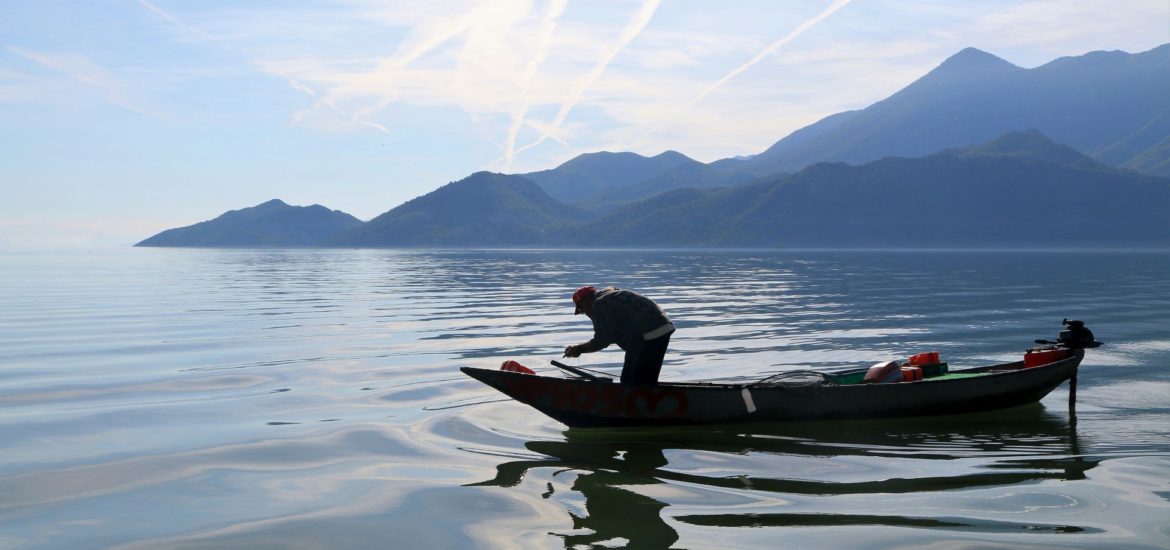
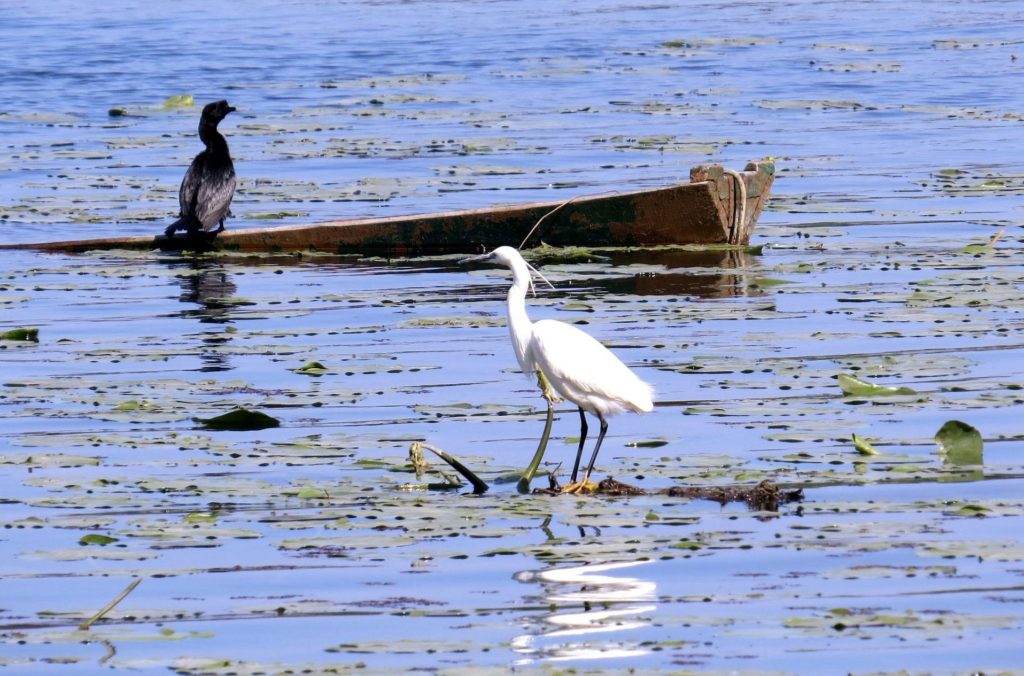
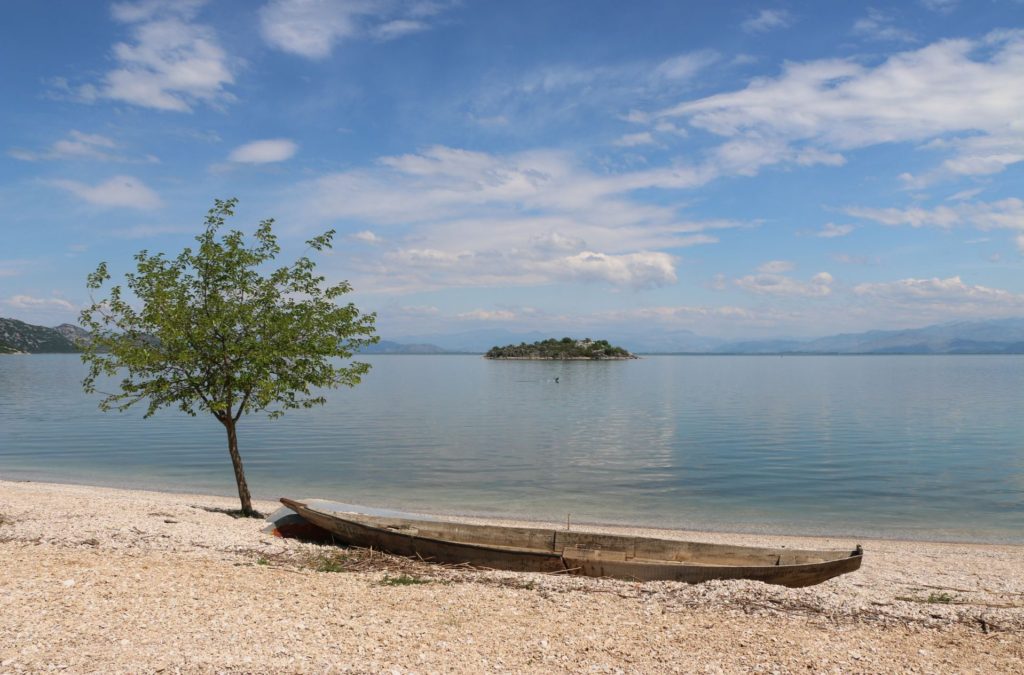
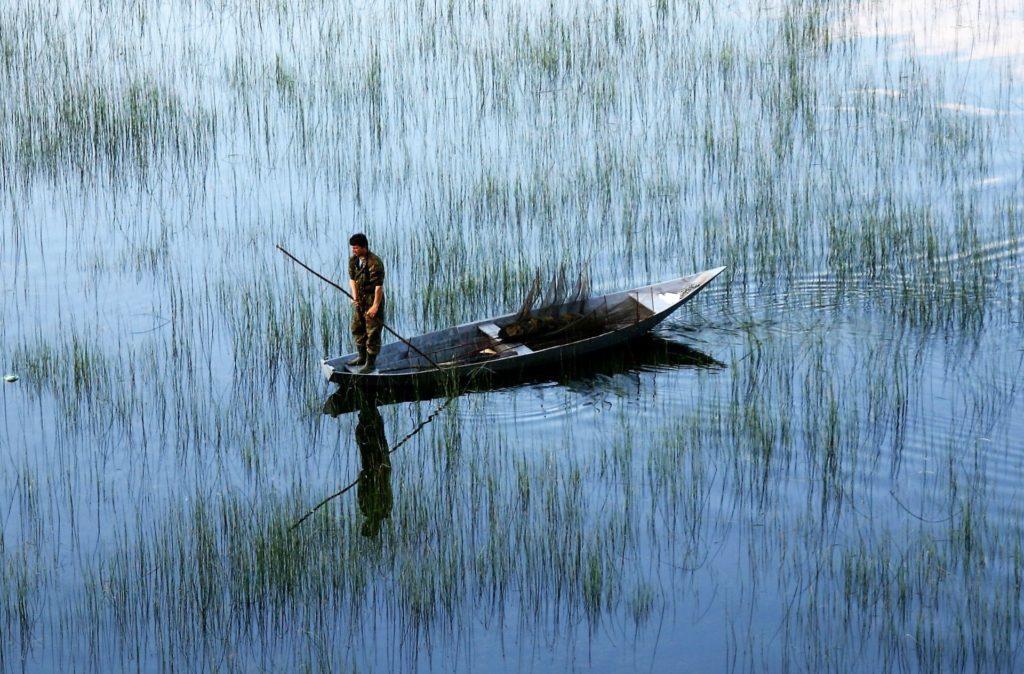
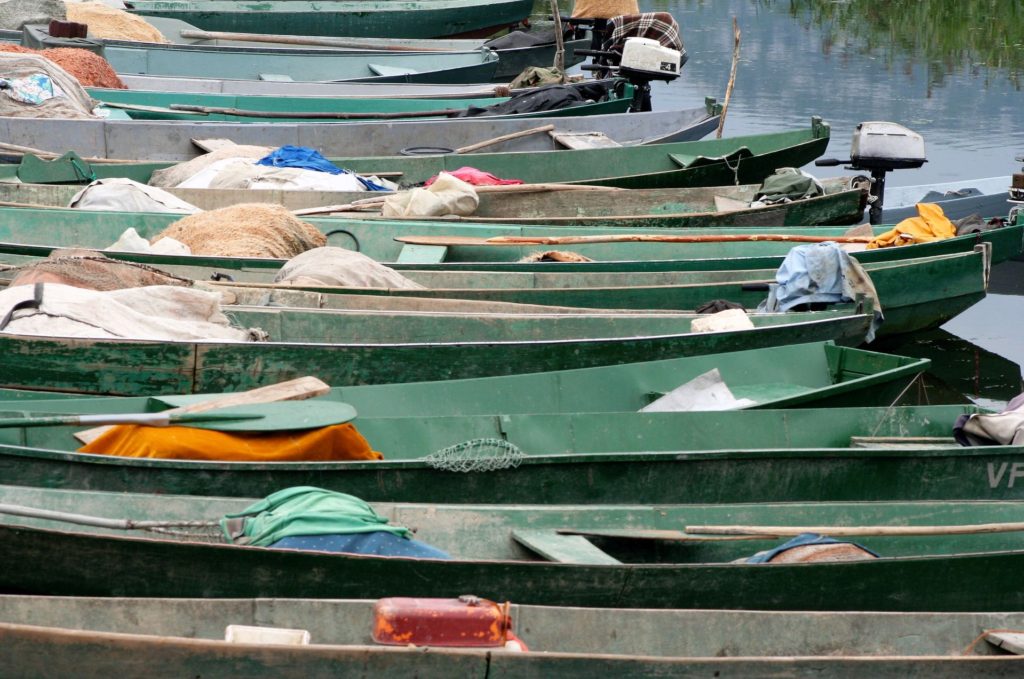

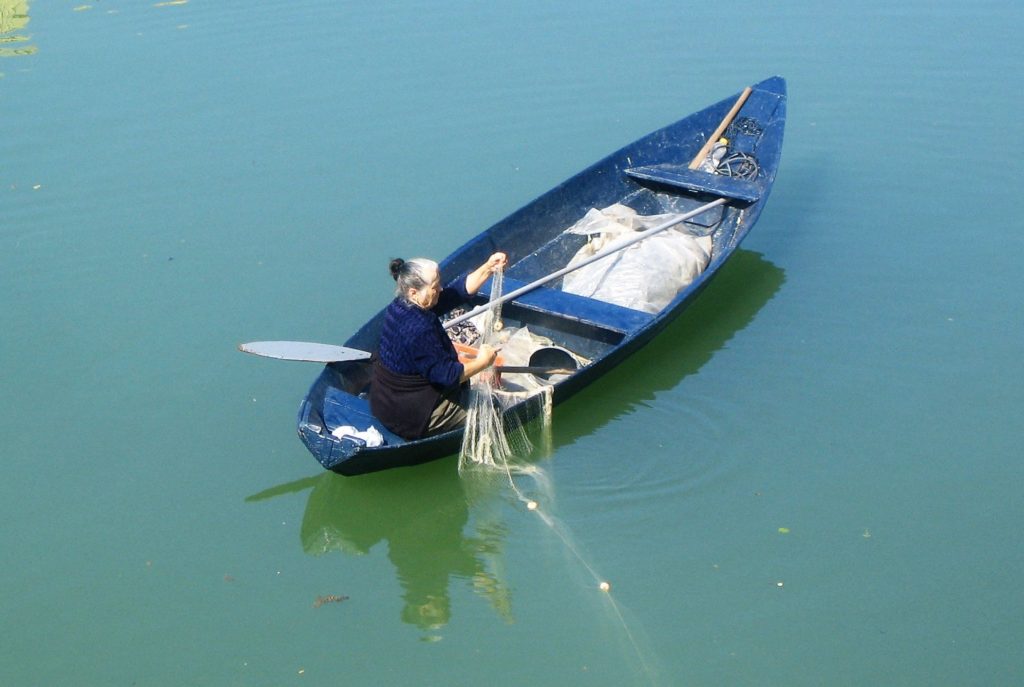
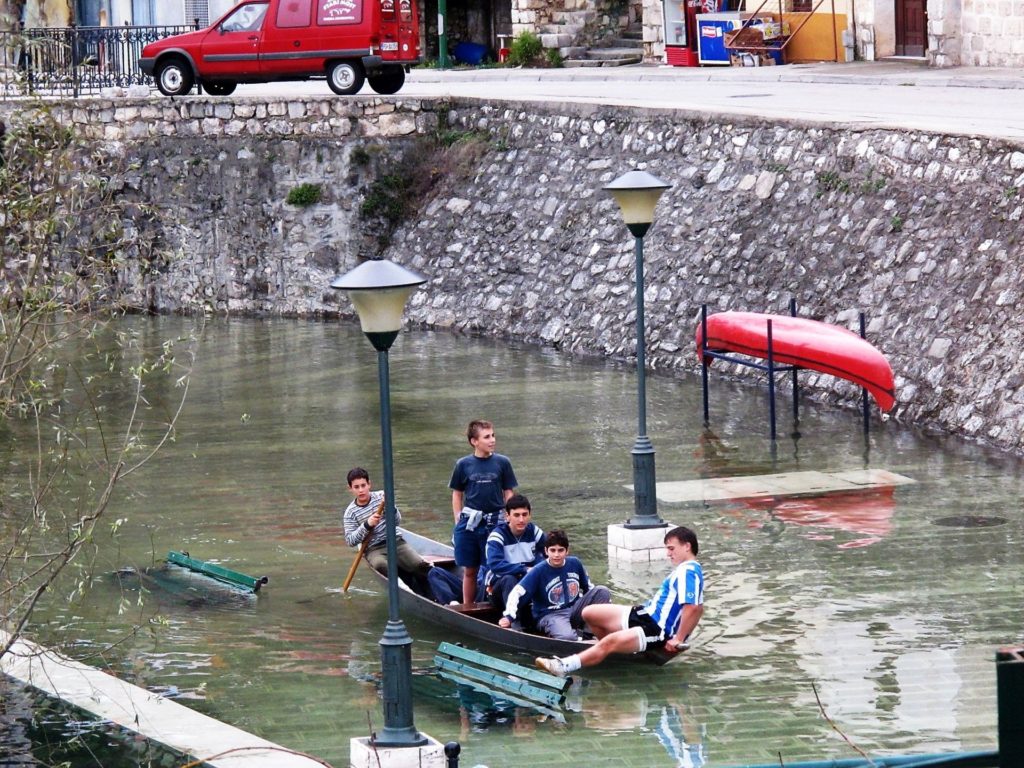

I wander when we can see those boats again!
I hope that the situation will improve this summer!
Yes, things like boats and coastal fishing and travelling which depend on them are very much a part of a traditional/historical heritage of a culture.
I know that you have been to L Ohrid. Do they use boats similar to cuns there as well?
I’ve noticed that sailing doesn’t seem to be a big thing in Montenegro (or rather Boka bay) despite near ideal conditions. I had expected to see a lot more small sailing boats out on weekends instead it’s mainly the odd motor boat or jet ski. Why is that? Is Montenegrin culture more ’mountain oriented’ or is it a cost thing (or both) or have I misjudged? I know that some of the sailors and captains of the Imperial Russian navy who fought against the Swedes (and their Dutch allies) in the Baltic sea in the 18th century were either from Boka Kotorska or trained at the naval academy in Perast.
Thank you for great information and pictures.Have byen to Skadar Lake many times.Bu only onde on the lake in a cun with a Montenegrin fisherman. Fortunately now there are organizations who work for the protection of the lake. Very important.
Göril, yes, it is very good that there are people, organizations and companies working to maintain old boating traditions. I’m looking into buying an old wooden boat for use in Boka Bay. Gajeta guc. The problem is finding someone who can maintain and repair those types of boats. I haven’t found any wharfs in Montenegro but have found one wharf specializing in traditional wooden boats in Croatia between Zadar and Sibenik.
https://mbdb.hr/en/betina-shipyards-today/
[…] on an island. It is flooded during the winter and it is clear that the traditional boats called ‘čun’ – in early times the only means of transportation – are still popular in this village, […]
[…] its way through reeds and water lilies and it is very stable under unfavourable weather conditions (https://montenegro-for.me/2021/01/cun-the-traditional-boat-of-skadar-lake/ […]